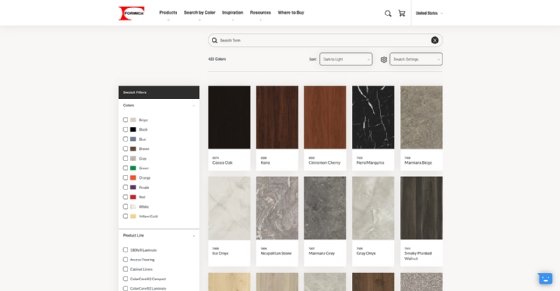
Nmedia - Fotolia
Content drives new B2B e-commerce
COVID-19 forced B2B e-commerce companies to create and enhance new revenue pathways. Two Sitecore users share how investments in digital experiences kept their companies rolling.
The pandemic drove e-commerce to new heights on the consumer side, as in-person connections were severed because of lockdowns and retail closures. For B2B e-commerce, it worked a little differently.
"For the most part, I would characterize what I've seen in B2B as quite similar to B2C -- with delayed onset and slightly less urgency," said IDC analyst Jordan Jewell. "B2B orgs felt similar pain [to the retailers], with declining sales and physical channels closed, yet digital commerce wasn't perceived as a savior to the same extent as in B2C."
That said, IDC projects B2B e-commerce growth to outpace the consumer side through 2024, and some B2B companies are making huge bets on e-commerce technology to catch up to the wild successes of their consumer counterparts.
B2B companies that had reimagined the digital side of business before the pandemic -- making it part of the main business, and not just a side project with its own revenue stream -- reaped benefits when COVID-19 social distancing rules went into place. Aligning content with B2B e-commerce became a big differentiator, according to two Sitecore B2B customers.
Formica tops its previous best
In the early months of the pandemic, home remodeling projects jumped more than 50% compared with previous years in many locales, as homeowners plowed money they couldn't spend on travel into their living spaces. Formica Corp.'s laminates are well-known for use as countertops, but they also find their way into many other household seating and table surfaces. The company does not sell directly to consumers.
The company's main customer base consists of interior designers, who typically require holding samples in hand to feel the tactile qualities of the surface -- as well as to view how it looks in different lighting situations -- in order to decide which one is appropriate for a project. Just prior to the outset of the pandemic, Formica had rethought its B2B digital approach, said Amy Fowles Gath, vice president of marketing at Formica.

Many designers who were serviced with sample sets in the past suddenly didn't have access to them. Throughout 2019, the global company relaunched its 27 websites in 17 different languages, in order to focus on the designer experience. A big part of that was to reorganize Formica's hundreds of thousands of choices into digital libraries in order to make it easier for designers to locate the one product they were looking for, and receive samples overnight. It was well-timed.
"As the pandemic hit, that entire touch-feel trafficking in samples fell apart because designers weren't in their offices, where they had big resource libraries," Gath said. "For our sites, e-commerce is literally the ability to order a sample. … Having that on our site -- and easy access to it -- has been critical."
Digitizing Down Under
In Australia, Coates Hire manages more than 1 million pieces of rental equipment across more than 150 locations in 21 categories, including earth moving, welding, mining and scaffolding. Its customer profile includes businesses of various sizes: individual tradespeople renting equipment and paying cash, large organizations on longer-term contracts that can cover multiple industries, and governmental entities working on infrastructure projects.
The company had to navigate some difficult circumstances during the pandemic, such as business lockdowns and some Australian states and territories closing their borders, or at least restricting entry, said Kirsty McKay, group manager of portfolio delivery and digital transformation at Coates Hire.
The company's online customer portal, which had launched in 2015, connects to many back-end systems including ERP and CRM. It offers a digital means to rent equipment, invoice and pay, manage disputes and time their pickup of sometimes massive construction equipment. In 2018, Coates Hire added safety, service and maintenance data -- which had previously been completely paper-based -- to the portal to improve the customer experience.
The company also utilized the new agile development processes it had launched and built a "Hire now" feature to rent equipment on the spot through the website using headless content management. It was made available for both site visitors and its internal sales team.
Then the pandemic hit. Many of the industries Coates serves remained open, as they were deemed essential, but not all of them. And different localities imposed different restrictions on how business was to be done at the rental lots. The company's work on digitizing its rental processes made a huge difference.
"We had everything in place and ready to support customers to pick up [gear] in a safe manner," McKay said, describing Coates' "click-and-collect" feature for contactless rental.
Next up for Coates Hire, McKay said, is building its central data platform and hardwiring it into the customer experience. One example is unlocking IoT tracking data for customers to enable finer detail in a rental transaction, such as visualizing where a piece of equipment is located on a map.
"Anything for our customers to unlock the value of their rental," McKay said. "Australia's a really big place, and some of our project sites ... it's a day-plus to get from one project site to another."
Site content trumps email
Content drives experience and customer journey personalization, said Desta Price, executive vice president of product management at Sitecore. Both B2C and B2B e-commerce customers need technology to go enabling simple transactions and build targeted experience through content and recommendations.
During the pandemic, Sitecore customers generally saw growth in digital sales beyond the top end of their predictions. Site content becomes a differentiator for users to build brand loyalty.
"I think a lot of people have seen an uptick in email marketing during COVID-19," Price said. "Standing out and holding somebody's attention [becomes the problem to solve]."







